Started & up for edit
Here is the start to the FAQ. Fix any errors you see and upload the changed version, when it is all fixed it can be posted. If you have been miss quoted I apologize I am only trying to help.
FAQ
There are a variety of different answers to questions hence the links for the newbies to read & decide for themselves.
My Amaryllis will not bloom:
I bought some Amaryllis bulbs at lowes last summer. They got the long swordlike green leaves but no flowers. When those flopped I cut them down and the leaves grew long again but no flowers? What do I need to do?
Also what is the hardiness zone for amaryllis?
Rebecca47 says:
Amaryllis are hardy in zones 8 and warmer and they need additional mulch in zone 8.
Cutting the foliage off is a big DO NOT DO! The foliage is what supplies the bulb with the food needed to increase in size, develop a good, strong root system and to initiate the flower buds deep within the bulb. When you cut the original growth of foliage off the bulb had to expend it's energy on growing new foliage. Oh and btw, most Amaryllis or "Hippies" as we call them here (short for their proper botanical name, Hippeastrums) have long, strapy or sword shaped leaves that can measure up to 30 inches long (RED LION, last summer! He is huge!)
There are more specific growing procedures in other posts (threads, knowing your growing area would help us know what requirements you meet and what can be met with artificial means.
See whole discussion here: http://forums.gardenweb.com/forums/load/amaryllishippeastrum/msg011609181838.html?4
Long floppy leaves:
Betonklotz says:
You can try to let them stay upright with tape and sticks. Otherwise, long leaves flopping over is a sign of too few light
Jodik says:
It actually needs more light than a diffused light situation allows... try moving it into a room that has an east or south facing window, if you can.
Otherwise, a stake will work to hold the leaves upright until you can get your potted bulb outdoors in spring.
A metal clothes hanger can be cut and bent into a temporary plant leaf holder, like the ones sold at stores... or a bamboo stake and some twine... whatever you have available, and can fashion into a holder for the leaves will work.
Lighting for Amaryllis indoors (Mature bulbs):
What have people used before that works? I live in an apartment that faces North East and as a result I don't get enough sun for my babies. I'm currently using a 250W Halogen light situated above my plants (far enough away so as to not burn them) however that does not seem to be enough as the leaves appear to be somewhat thinner etc. From researching about foot candles etc online, it appears that Halogen lighting is not quite as efficient as lets say High Pressure Sodium lights or Metal Halide. I'm considering buying a 400W unit but I think it's going to have to be High Pressure Sodium as that throws off more light in the red end of the spectrum needed for flowering etc. Since I don't pay power here, the power bill is not a big deal however I'm concerned about the heat buildup. The apartment has cement ceilings so there is no risk of burning anything there. I can situate a fan so it blows air onto the fixture to keep the fixture cool.
Feedback would be greatly appreciated. I think that the 400W fixture will do the trick for high enough light for my babies. Can you tell I'm slightly addicted :-). Gerard.
Hans-Werner says:
Yes 400 Watt high pressure lights are good and can supply 2 m2 very well.
I presume that the following Lamps are the very best high pressure sodium discharge lamps:
400 Watts Plantastar (55000 Lumens, from Osram)
400 Watts SON-T-Agro (55000 Lumens; Philips)
both with E40 socket.
Bluebonsai01 says:
I have maybe 20 species and F1 hybrids now and I use 2 400W MH (AgroSun)bulbs as the color of the light is much more pleasant (HPS looks like a sickly old horror movie to me) and I could care less about flower production...they flower outside in the summer when they are inclined to based on natural genetics and the color spectrum of MH is supposedly better for leaf and therefore bulb growth. Of course, I also have many other aroids under these lights and they flower from bare tubers and so lighting is not an issue.....you only want to increase tuber size to get to flowering size on these plants. Heat is also not an issue on any HID light if you keep a fan at low speed to get decent air circulation so this is not a problem.....in fact, I have to supply supplemental heat to the bottom of the pots since they are in my basement and they would be forced into dormancy at the 50-55F temps they see down there all winter. The only problem is the cost as we pay 10 cents per KWhr.....OUCH and I run the 800W for 16 hrs per day. It will be interesting to hear how yours do....I hope that they grow like mad for you :o) Dan
For the rest of the discussion: http://forums.gardenweb.com/forums/load/amaryllishippeastrum/msg101935491890.html?22
Lighting for Amaryllis indoors (seedlings):
Gerard says:
I've been successful now in using 400W HID lights. You can use either Sodium Vapor or I believe the Metal Halide Lamps. They are more expensive that fluorescent setups but they do provide the footcandles necessary for proper growth. They would work very well for seedlings. If you do use fluorescent lights, make sure you have the seedlings no more than an inch from the lights to keep them nice and stocky. Of course, when the weather warms up in spring, you can get them outdoors in the full sun. Run the fluorescents for 12 to 14 hours a day. Longer is better than shorter duration wise. Remember to keep the lights as close as you can to the seedlings. Also, Don't worry about having special fluorescents for growing plants. You can get away with cool white bulbs which will be the cheapest and they'll keep the seedlings stocky.
For more details: http://forums.gardenweb.com/forums/load/amaryllishippeastrum/msg101935491890.html?22
Soil:
What to plant your new Amaryllis/Hippeastrum in:
Al Tapla's Soil Mix:
I'll give two recipes. I usually make big batches. I also frequently add agricultural sulfur to some soils for acid-lovers or to soils I use dolomitic lime in.
Al Tapla's 5-1-1 Mix
5 parts pine bark fines
1 part sphagnum peat
1-2 parts perlite
garden lime - Dolomitic.
controlled release fertilizer (not really necessary)
a micro-nutrient source (seaweed emulsion, Earthjuice, Micro-max, STEM, etc,)
Big batch:
2-3 cu ft pine bark fines
5 gallons peat
5 gallons perlite
2 cups dolomitic (garden) lime (or gypsum in some cases)
2 cups CRF (if preferred)
1/2 cup micronutrient powder (or other source of the minors)
Small batch:
3 gallons pine bark
1/2 gallon peat
1/2 gallon perlite
4 tbsp lime (or gypsum in some cases)
1/4 cup CRF
micro-nutrient powder (or other source of the minors)
Rocky Mt. Ryans soil mix:
75% are in bark, hydroton and peat mix.
20% are in 75% perlite, 25% bark
5% are in semi-hydro pots in hydroton.
Verdict still out on the semi-hydro-- but the hippi and African Violets in these pots are doing extremely well!
The 20% in the perlite are doing exceptionally well.
The rest in the hydroton bark and peat mix are mediocre at best.
Depending on the semi-hydro experiment, I may be switching all over to the hydroton.
Hope that wasn't too long!
Ryan
Jodik soil mix:
Unfortunately, I don't use exact measurements. I never have. Like I do in my kitchen, I eyeball amounts and tweak it all to get what I want. So here it is... sort of...
1. ReptiBark reptile bedding... which is screened pine bark pieces.
2. GraniGrit Poultry Grit... which is granite chips.
3. Perlite... just a plain old bag from any garden center or store. I currently have a bag from MiracleGro.
4. Vermiculite... again, no specific brand.
5. A tiny bit of bagged MiracleGro potting soil... NOT with the moisture retentive junk!
6. Controlled Release Plant Food... Osmocote.
I only make small batches at a time, and I'd guess you want to make a huge batch. I use a 2 or 5 gallon bucket, and I pour in about equal portions of the pine bark, granite chips, and perlite... to that, I add a few handfuls of vermiculite and a few handfuls of potting mix... and a bit of Osmocote. Mix thoroughly, and tweak to the consistency that feels right.
KaboehmÂs Soil Mix:
I am getting happier with my mix of common stuff, and haven't lost anything planted in it yet! (started with seedlings and some young bulbs this spring).
Mine has more potting soil that Jodi's, but again, those photos of roots on my 4-, 7-, and 14-month bulbs don't lie!!
Approximately:
10 scoops Miracle Grow potting soil
5 scoops coarse sang
3 scoops perlite
2 scoops decomposed granite
______
now adding 2 scoops charcoal and may add 2 scoops of small lava rock (really little...) almost like more perlite I guess. So as I increase the inorganic, the proportion of organic becomes less. Again, the roots don't lie!
K
Planting Formulas:
http://forums.gardenweb.com/forums/load/amaryllishippeastrum/msg1012061113063.html
AlÂs Discussion:
http://forums2.gardenweb.com/forums/load/houseplt/msg1100183920892.html
Container Soils - Water Movement & Retention: http://forums2.gardenweb.com/forums/load/contain/msg0420085231701.html
Fertilizer what kind & how much:
Jim _thomerson says:
Hippies like fertilizer. Use one where the first number is equal to, or lower than, the other two; say 15-15-15 or 5-10-12. The numbers are for nitogen, phosphorus and potassium. I use bulb fertilizer, rose fertilizer, and tomato fertilizer. Generally, any any fertilizer for blooms will have low nitrogen. If you give hippies too much nitrogen you get a long-leafed sprawley plant not much interested in blooming. A lot of people use low levels of liquid fertilizer with every watering.
Jodik says:
I use liquid MiracleGro at about half strength or less every time I water. I also add micro-nutrients at about the same strength. I keep a constant supply of food going to the roots.
I also flush my pots every once in a while with plain, clear water... which helps leach out any accumulated salts and excess fertilizer.
Osmocote is slow release, and if you read Al's articles, he adds some to his mixes when he builds a soil. I don't, for the simple reason that I mix small batches and I don't want to add too much fertilizer. I feed regularly, so there's really no need.
Your question about fertilizers is a good one, though... we've discussed it here before, and it seems that different growers feed differently.
I've got the medium and watering down to a workable science... next, I need to learn more about fertilizers!
So, my answer is... at this point in time, I recommend an all purpose plant food at low strength, fed on a constant basis, and an occasional leaching. I'll be the first to admit that the fertilizer question is my weak point in gardening knowledge.
The one thing I do know about plant food is that it's necessary to feed container plants a food that's already broken down and usable to the plant... and this ties in with the vast differences between container gardening and gardening in the ground/garden beds, where the necessary army of microorganisms work to break down compost into usable food.
In her book on Hippeastrum culture, Veronica Read recommends a fertilizer lower in nitrogen than the other two main fertilizer ingredients, and recommends commencing feeding once the bulb has finished blooming.
My next quest will be finding out more about fertilizers, and what regimen is best for hybrid Hippeastrum bulbs.
I use MiracleGro liquid houseplant food, Superthrive occasionally, and a trace mineral concoction sent to me by a friend.
Others use different feeding methods... organic fertilizers, fish emulsion, MiracleGro products, etc...
Xineohpinakc says:
With mine I fertilize in the summer only with water soluable after the blooms are spent. It makes the foliage attractive and heavy roots. In the fall I change out the pots to fresh dirt and add the old to my compost pile.
For dirt I use composted pine needles. It works very good and doesn't get water logged.
Jim ThomersonÂs full discussion: http://forums.gardenweb.com/forums/load/amaryllishippeastrum/msg1116504510630.html
JodikÂs full discussion: http://forums.gardenweb.com/forums/load/amaryllishippeastrum/msg1116504510630.html
Fertilizer Program - Containerized Plants (Long Post):
http://forums2.gardenweb.com/forums/load/contain/msg1020215928898.html
Help! I Think my Amaryllis is dying!
My Amaryllis put out lots of foliage, but no blooms. I'm having some leaves dying and turning yellow. So I decided it "wasn't their time", and perhaps they would be better off re-potted. When I repotted them, I found them terribly root-bound, with roots just circling the pot. The roots were dry, intact, and there was no evidence of root rot at this point. I gently loosened the roots and potted them up into pots that are 2 inches wider than the bulb on each side. I had read on this post that some people put theirs outdoors and they develop very long roots, so I wanted to give them plenty of room to grow. That was about a month ago. I have not watered them since. However, my water meter says that the bottoms of the pots are still "wet" (4 on a scale of 1 to 4) and I'm having some leaves dying and turning yellow. I'm afraid my roots are rotting! I promise you that other than the moisture in the potting mix when I potted them up, I have not added one drop of moisture. I also put them in clay pots (unglazed) to aid evaporation and hopefully prevent a problem like this. I used tons of perlite to keep the soil mix very light. I just don't know why this is happening. Would it do any good to repot them now, and if so, how would you do it? Many thanks for any help you can offer! MacThayer
Jodik says:
DO NOT cut off the foliage! I don't necessarily think your bulbs are dying, but it wouldn't hurt to care for them properly right now, beginning with a re-pot in well-draining medium and a light dusting of anti-fungal powder...
For the most part, hippeastrum bulbs are fairly forgiving when it comes to re-potting. My advice is to choose a clay pot about 2 or 3 inches wider around than your bulb and fairly deep to give the roots room to grow. Use a potting medium that's very well-draining. I'll talk a little bit about medium later in the post. No need to use a layer of anything in the bottom of the pot, unless you use a small piece of screen to cover the drainage hole and keep the soil inside the pot.
Remove any dead or rotten roots... also, remove any dead leaves and outer layers of the bulb that may be dead and dried up or papery. At this point, I usually dust the bulb lightly with Captan, an anti-fungal powder. This helps keep the bulb from rotting. I also dust a little rooting hormone powder on the root area and basal plate.
Pot the bulb as you would, allowing about a half to two thirds of the bulb to remain above soil level. Lightly moisten and mix the medium before using it to pot up the bulb... this helps evenly distribute moisture when you water in plants. Lightly tamp down the medium around the bulb, and water it in until you see water come out the bottom of the pot. Allow it to drain, and dump any remaining water left in the saucer. You may want to stake and tie up the leaves so they don't flop all over the place, and label your bulb so you know what variety it is, if you already know.
Let's talk about soil... in our climate, we want a soil that drains well and doesn't hold too much moisture for too long... this can cause the bulbs and roots to rot. Hippeastrums prefer to dry out a bit in between waterings, and they hate "wet feet"! They almost thrive on neglect, it seems... within reason, of course! I've played around with different medium mixes for a while now, and I've recently learned a lot about what constitutes a good container mix, and why... and I've also learned a bit about proper watering and how water and soil affect container plants, etc...
Below, I've posted a link to a fabulously informational thread over at the Container Gardening Forum. It discusses soils and water, and how it all works in containers. It's an eye-opener, and it helped me understand the how and why of good container gardening. It also led me to the perfect medium for my bulbs, which are all thriving now, thanks to Al (tapla) at the Container Gardening Forum, and his recipes for container mediums!
Please read some of the other articles written by Al (tapla)... they are very educational and will help immensely if container gardening is something you do a lot of.
I have a moisture meter, too... but I don't trust it as much as I trust my finger. If you don't want to stick a finger down into the medium to around root level, you can use a bamboo skewer, available at any grocery store at about a dollar a pack. Stick the pointed end of the skewer into the soil until it sits at about root level and leave it there... take it out every once in a while and press it to your cheek... if you feel moisture, it's too soon to water... if the skewer comes out dry, water.
Hippeastrums are heavy feeders while in growth mode, so you'll want to fertilize. I use MiracleGro for houseplants at a diluted rate, and it seems to keep my bulbs happy. Others use different fertilizers... whatever works for you is fine.
I think the most important things to consider are the medium you use, and proper watering. Climate is another thing we need to consider... we're northerners, and we must grow indoors part of the year.
Now... go to the Container Gardening Forum and read those articles! They will help you understand container mediums and proper watering! Good Luck... and if you have any other questions, we're all happy to try and help!
Oh, and don't be alarmed if your bulbs lose a few leaves now and then... some die of old age, after they've done their part to help feed the bulb... photosynthesis, etc... as long as new leaves emerge at intervals, and the bulb itself remains firm and healthy, everything is fine.
A green thumb is nothing more than applied knowledge!
For the full discussion go here: http://forums.gardenweb.com/forums/load/amaryllishippeastrum/msg052035319330.html
How long for seeds to sprout?
Jodik says:
Generally speaking, I would consider Hippeastrum seeds slow to germinate. Some varieties or crosses might sprout relatively quickly, but other varieties can take up to a month or so. I don't give up on them until at least 3 months have passed.
How long are seeds viable?
Jodik says:
If stored properly, Hippeastrum seeds can remain viable for quite a long time, perhaps a year or so... but as time progresses, the rate of germination will fall, of course. The temperature and humidity they're stored at will play a role.
It's best to plant them within... oh, I'd say the first 6 months, or thereabouts... but if you can't, you still will most likely get a good amount to grow if you have lots of seeds.
I would definitely give them a try when it warms up... what have you got to lose?! I plan on planting my leftovers from last year when our weather warms up. I don't expect them all to germinate, but some should. I've kept them in airtight containers in an average temperature, and in the dark.
It will be interesting to see how far we can push the envelope, so to speak, with regards to storage time!
Miscellaneous info:
From experts including Brigarif: http://forums.gardenweb.com/forums/load/amaryllishippeastrum/msg0101461826260.html?19
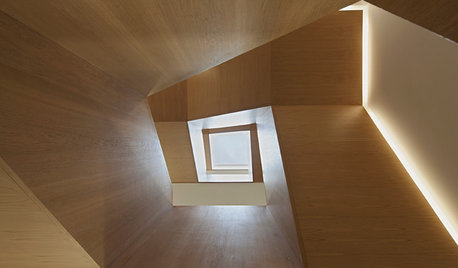
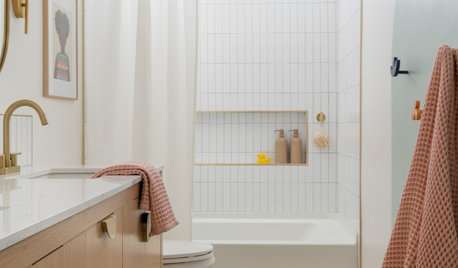
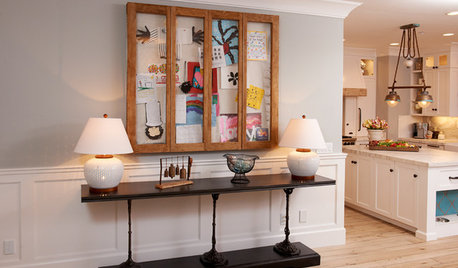
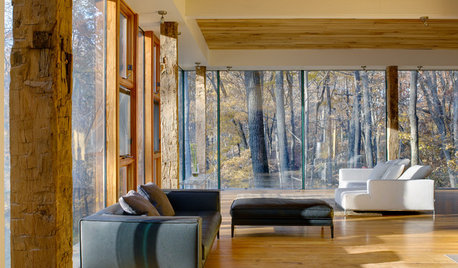

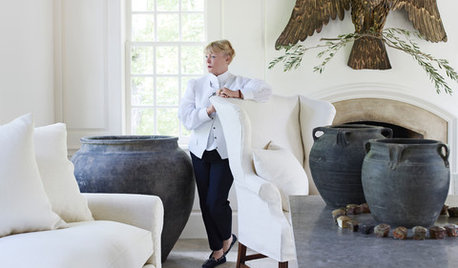










jodik_gw
Carl
Related Professionals
Lake Oswego Landscape Architects & Landscape Designers · Arlington Landscape Contractors · Edmond Landscape Contractors · Beachwood Landscape Contractors · Braintree Landscape Contractors · Framingham Landscape Contractors · Las Vegas Landscape Contractors · Live Oak Landscape Contractors · Long Beach Landscape Contractors · Longmont Landscape Contractors · Newberg Landscape Contractors · Plantation Landscape Contractors · Ridgewood Landscape Contractors · Selden Landscape Contractors · Shirley Landscape Contractorsrebecca47
brigarif Khan
jodik_gw
ajsblu_eyesOriginal Author
dondeldux z6b South Shore Massachusetts
ajsblu_eyesOriginal Author
jodik_gw
ajsblu_eyesOriginal Author
jodik_gw